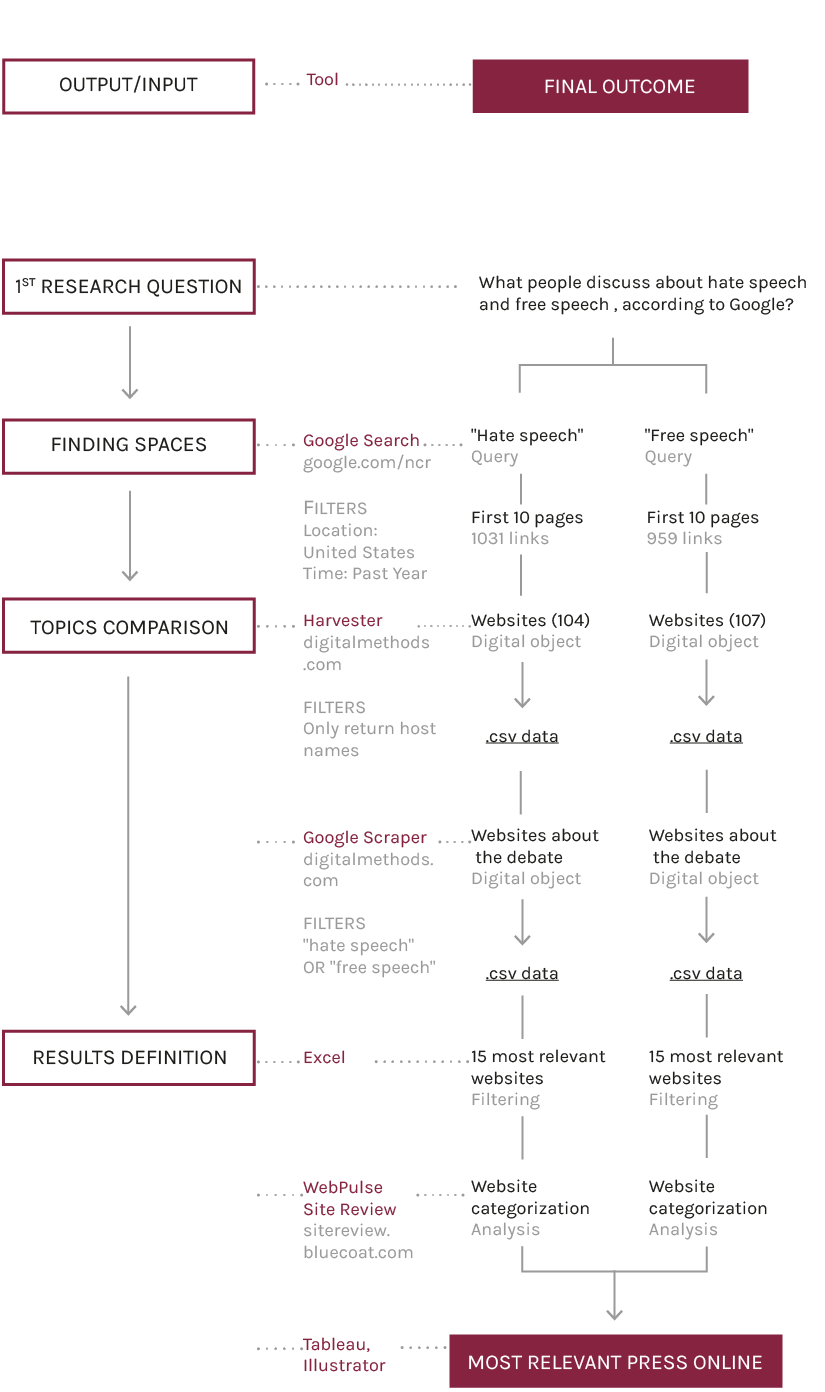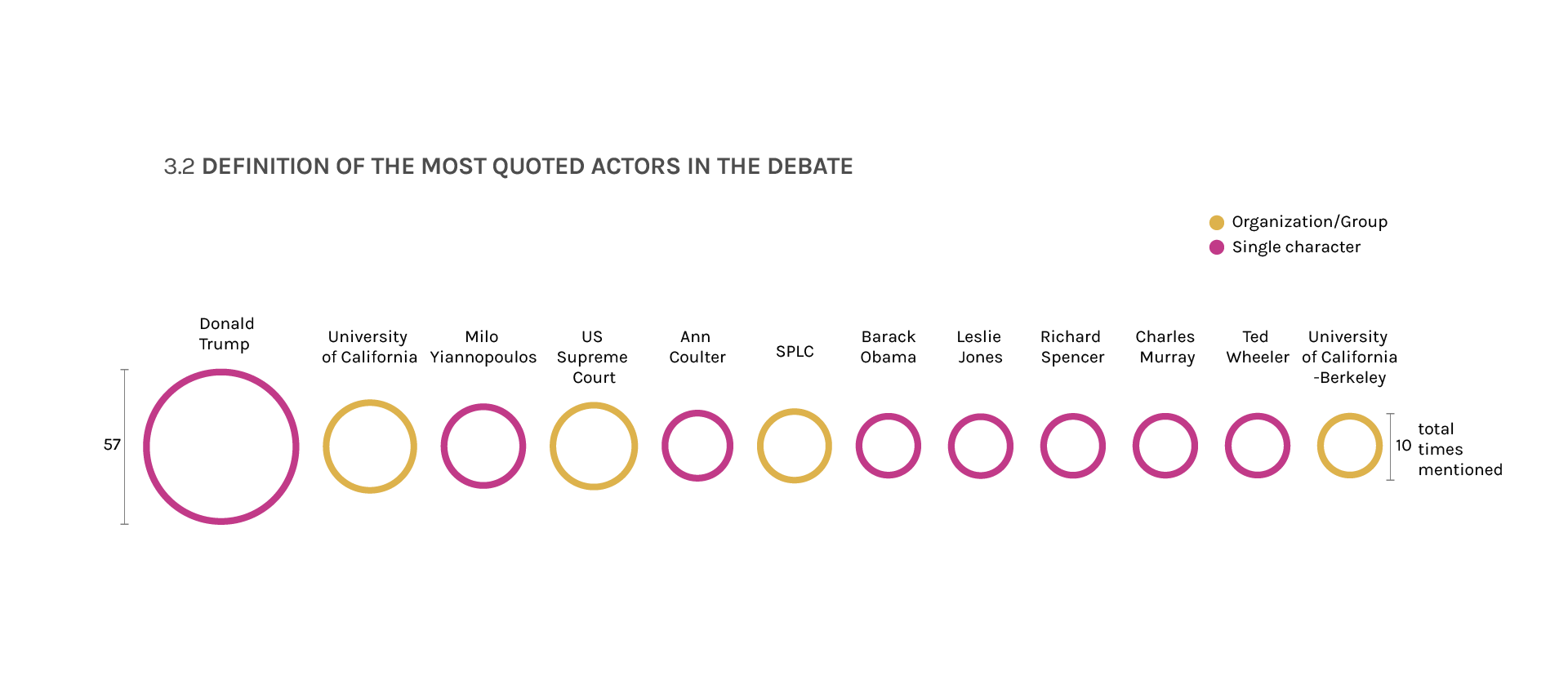Description
Once that we focused on the relation between hate speech and freedom of speech, we tried to individuate where the debate is more alive. In first place we searched for the two queries separately in Google and we found out that the two main virtual platforms in which we can find the debate are the social networks (Facebook and Twitter) and the online press. The “other” category contains reference websites like Wikipedia or shopping platforms like Amazon.
After this first screen of the situation, we needed filtering the data. We noticed that for the category of the social networks, the two queries were often present in different kind of social network. More precisely, the query of hate speech is more present in Twitter, meanwhile the query of free speech is more present in Facebook. On the contrary, in the press online, it is possible to find a wider common area of the two queries that is important to understand where is located the debate. In the first visualization is showed how the division of the two queries in the news spreads. As we can see, in more than one platform there is an equal distribution of the two queries, that may be read as a sign of a debate in course.
At this point an additional selection was necessary in order to define the actors of the debate. We started from the online press that mentioned for the most the two arguments. We selected the first ten links of each website and we analysed the texts of the links searching for people and organizations.
The results show that the majority of the people that we found belong to the political sphere, while organizations belong mostly to the education sphere, especially universities.
Protocol


We started searching the two queries separately in Google, setting the research only in United States, in the last year. We took the results of the first ten pages of Google. The results are 1031 links for hate speech and 959 links for free speech. To select which websites were talking about the two queries we used Harvester that was able to recognize which were the Url of the websites. The output results were 104 links for hate speech and 107 for free speech. After this selection, with Google Scraper we tried to found out which of these websites were more involved in the debate, searching for both the queries in this list of links. We finally selected the websites that talked more about the topic, for each query, using excel and categorizing them with WebPulse Site Review. In the end we used Tableau and Illustrator to create the final visual output.
The second part of this question points to understand who are the actors in the debate. The 20 most relevant websites that talk more about the debate in the category of online press were our strating point to reach this data. We selected 10 links for each website with Sharecount, a tool that, inserting an URL of a website, lists the most shared articles of the website. Finally then, with the tool section “Entity extraction” of Ailyen, a text analysis tool, we found out who are the most mentioned people and organizations in the debate.

